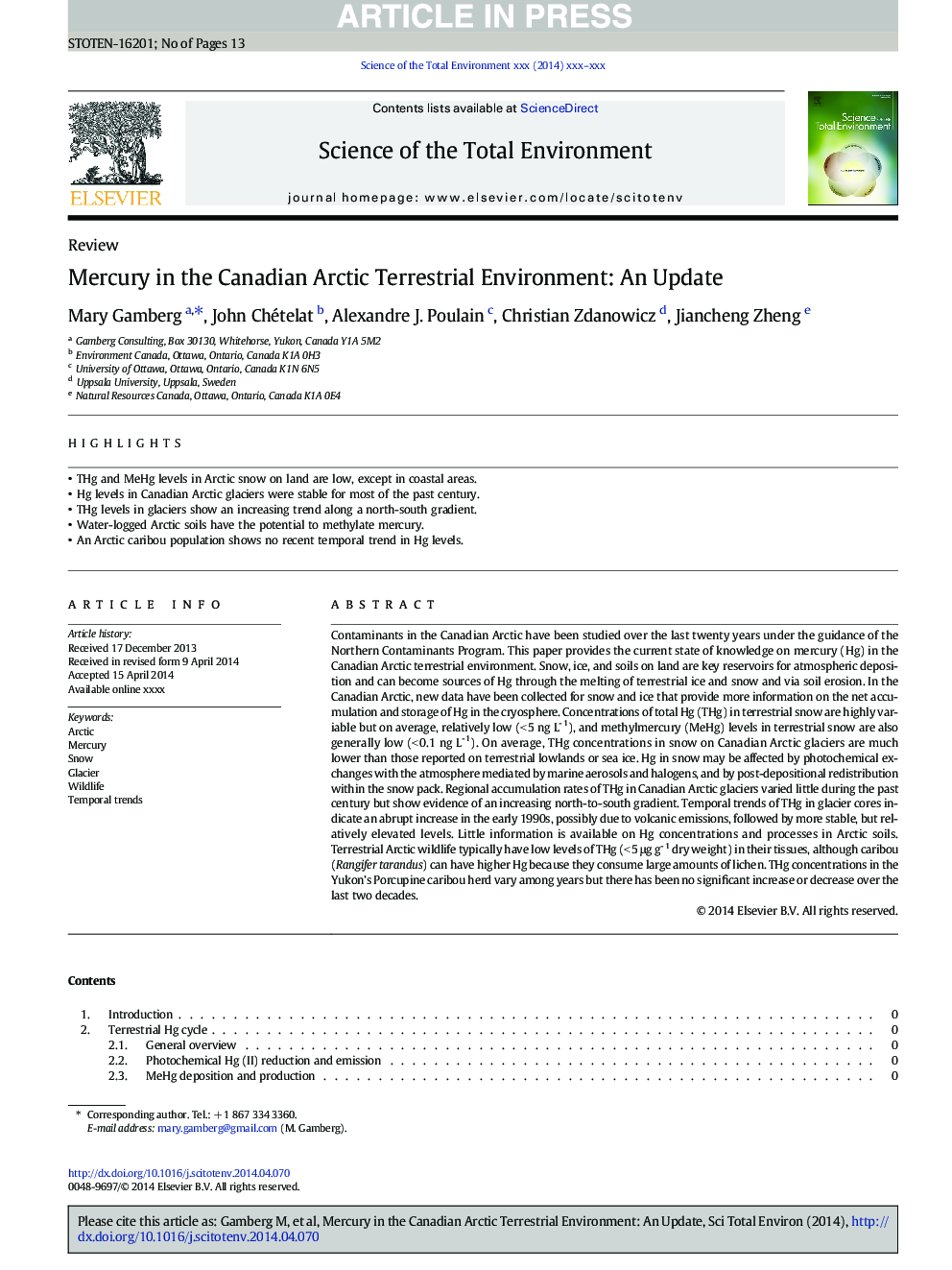| کد مقاله | کد نشریه | سال انتشار | مقاله انگلیسی | نسخه تمام متن |
|---|---|---|---|---|
| 6327338 | 1619767 | 2015 | 13 صفحه PDF | دانلود رایگان |
عنوان انگلیسی مقاله ISI
Mercury in the Canadian Arctic Terrestrial Environment: An Update
ترجمه فارسی عنوان
جیوه در محیط دریایی قطب شمال کانادا: به روز رسانی
دانلود مقاله + سفارش ترجمه
دانلود مقاله ISI انگلیسی
رایگان برای ایرانیان
کلمات کلیدی
قطب شمال، جیوه، برف، یخچال، حیات وحش، روند زمانی،
موضوعات مرتبط
علوم زیستی و بیوفناوری
علوم محیط زیست
شیمی زیست محیطی
چکیده انگلیسی
Contaminants in the Canadian Arctic have been studied over the last twenty years under the guidance of the Northern Contaminants Program. This paper provides the current state of knowledge on mercury (Hg) in the Canadian Arctic terrestrial environment. Snow, ice, and soils on land are key reservoirs for atmospheric deposition and can become sources of Hg through the melting of terrestrial ice and snow and via soil erosion. In the Canadian Arctic, new data have been collected for snow and ice that provide more information on the net accumulation and storage of Hg in the cryosphere. Concentrations of total Hg (THg) in terrestrial snow are highly variable but on average, relatively low (< 5 ng L- 1), and methylmercury (MeHg) levels in terrestrial snow are also generally low (< 0.1 ng L- 1). On average, THg concentrations in snow on Canadian Arctic glaciers are much lower than those reported on terrestrial lowlands or sea ice. Hg in snow may be affected by photochemical exchanges with the atmosphere mediated by marine aerosols and halogens, and by post-depositional redistribution within the snow pack. Regional accumulation rates of THg in Canadian Arctic glaciers varied little during the past century but show evidence of an increasing north-to-south gradient. Temporal trends of THg in glacier cores indicate an abrupt increase in the early 1990s, possibly due to volcanic emissions, followed by more stable, but relatively elevated levels. Little information is available on Hg concentrations and processes in Arctic soils. Terrestrial Arctic wildlife typically have low levels of THg (< 5 μg g- 1 dry weight) in their tissues, although caribou (Rangifer tarandus) can have higher Hg because they consume large amounts of lichen. THg concentrations in the Yukon's Porcupine caribou herd vary among years but there has been no significant increase or decrease over the last two decades.
ناشر
Database: Elsevier - ScienceDirect (ساینس دایرکت)
Journal: Science of The Total Environment - Volumes 509â510, 15 March 2015, Pages 28-40
Journal: Science of The Total Environment - Volumes 509â510, 15 March 2015, Pages 28-40
نویسندگان
Mary Gamberg, John Chételat, Alexandre J. Poulain, Christian Zdanowicz, Jiancheng Zheng,
